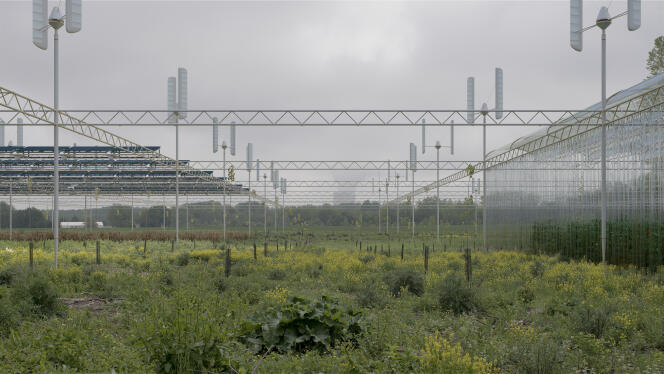Rather than focusing on the bike installed at the entrance to the exhibition Light energies – until March 17, at the Pavillon de l’Arsenal, in Paris – to measure their muscular power (15 to 20 watts), the visitor would benefit from lingering in front of the black and white photo hanging a few meters away. Venice Beach, Los Angeles, 1952.
No pristine sand, no dreamy ocean or skateboarders who defy the laws of gravity. They wouldn’t have room for it. The beach has disappeared. Facing the waves, dozens, even hundreds of derricks – the wooden or steel tower model – saturate the photo and pump endlessly. The United States extracts more than a quarter of world production. Oil, the queen energy, is essential.
Half a century later, Venice Beach has regained its sand, but in the United States, derrick pumps, the smallest models, are now part of street furniture in the same way as street lamps. This is what a series of photos published in the American magazine shows The Atlantic. Here, in 2003, an articulated arm faces the opulent houses of a subdivision. Another draws from the parking lot of a McDonald’s restaurant. In Signal Hill, there are two of them, around a café terrace. What will become of these drillings in a world without oil, if one day it was decided to stop pumping?
Make energetic objects lovable
“What might a world weaned from fossil fuels look like? What will landscapes that integrate more renewable energies look like? » This is the question posed by Raphaël Ménard, architect, engineer, president of AREP, the largest architectural agency in France, obsessed with the post-carbon world, in this exhibition in three acts. In the aftermath of COP28 which, for the first time, considers the exit from fossil fuels, he addresses the citizen. But also to his fellow architects, town planners, landscapers, designers, asked to take an interest in these energetic objects if we want to make them more lovable.
The architect Claude Parent had designed the power plants of the Messmer plan. Xavier Piechaczyk, the chairman of the board of RTE, is looking for those who will imagine the pylons of tomorrow. “Today, to succeed in the necessary deployment of renewable energies, a new landscape integration, a new post-carbon and post-oil aesthetic” needs to be invented, believes Raphaël Ménard.
Coal and oil have shaped the contemporary city, we often forget this. In the 19th centurye century, Salamandre stoves entered apartments. Chimneys, those in the paintings of Albert Marquet and Camille Pissarro, grow on the roofs. The streets are widening for cars. Are the wind turbines attacking? Before, France had some 10,000 water mills, the number of land masts planted in France today.
You have 50.1% of this article left to read. The rest is reserved for subscribers.
